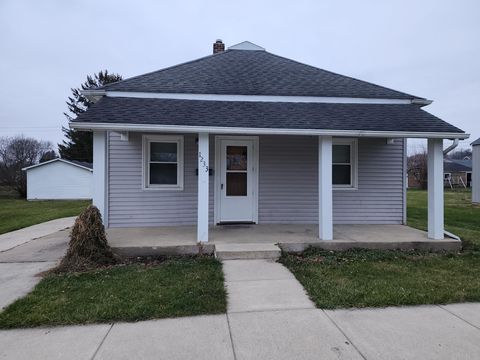
A plan should be developed for maintaining your property, regardless of whether it's a residential or commercial property. Maintenance can be fun, or even profitable. You can make a difference in the market value of your rental properties by taking care of maintenance.
It's important to keep your home in good condition on a regular basis. Maintaining your home regularly can save you money and keep you from having to make costly repairs later on. Preventive maintenance can help you protect your investment, reduce your liability, and keep tenants happy.
In order to determine how much you should spend on maintenance, you should take a number of factors into consideration. For instance, the age and location of your property can have a big impact on your costs. Higher-end properties will need more maintenance than older properties. Your local climate can also have an impact on how much maintenance you need.

You can avoid negative consequences by performing maintenance in an area where there is a flu epidemic. This includes inspecting your exterior for damage, as well as checking for drafts. Also, make sure that you seal your doors and windows properly.
You can also save money by doing seasonal inspections on your property. To improve curb appeal and ensure safety, it is important to pay attention to any little problems. If your home's plumbing and HVAC systems are in good condition, you might not have to spend a lot on costly repairs later. Painting interior walls or replacing damaged carpets is another great way to improve your property's curb appeal.
You'll need to be prepared for the cold weather whether you're a landlord, property manager or both. By investing in proper insulation, you can ensure that your properties remain comfortable all winter long. Additionally, you should ensure your windows and doors are sealed. Also inspect your electrical outlets to make sure they are free from frayed wires.
The most expensive part of maintenance isn't necessarily the work itself, but the time it takes to do the work. Property owners often don't consider the amount of work needed to maintain their homes. However, the cost of home maintenance can easily add up to thousands of dollars a year.

Property maintenance can be as easy as painting the front doors or as difficult as installing new fixtures. It is clear that tenants will be happy if your property is well maintained. This can also increase your property's value. You will decrease the chances of tenants complaining about issues if you have a well-thought out maintenance plan. It may not be possible to do your own property maintenance. A professional can help you. BNB Haven is a company that can assist you with property maintenance, both DIY and professional.
FAQ
What are the most common handyman repair tasks?
Handymen often repair roofs, windows and doors, doors, gutters. Decks, fences and sheds are all common repairs. When it comes to building or home improvement projects that cannot be performed by DIY homeowners, handymen can help with carpentry, plumbing, painting, drywall installation, landscaping, concrete work, fence construction, decking, tiling, and more.
Are you able to work as a handyman without a license?
To become an independent contractor in most states, you don't need to have a license (as opposed with a salaried worker). However, there are some requirements you must fulfill:
-
At least 18 years of age
-
Have a high school diploma or GED.
-
A four-week course in a vocational school.
-
You must pass a background check at the Department of Licensing.
-
Pay a $20 fee to register annually.
Also, you will need to obtain a business license and workers' compensation insurance.
What do the majority of handymen charge an hour for?
An hourly rate for a handyman is between $50 and $75. Many have been doing this job for many years. Their average time on any job is approximately 10 hours. They are well-known and do not need advertising.
They will tend to specialize and establish customer relationships over time.
They are quick, reliable, and affordable. This is the key difference between them and other contractors.
The majority of people have at least 2 or 3 friends who they trust enough that they call them when they need assistance.
Some people are so successful that they start their own company.
Why hire a handyman when I can do it myself?
It's a great way to save time and money by hiring a handyman. This saves you time and money. Hire a handyman to help you with your job.
How long does it take to become a handyman?
It takes many years of hard work to become an expert handyman. It is usually a hobby that starts out helping your family, but it eventually becomes a full-time occupation.
As you move along, you'll learn all the skills necessary.
Should I pay a handyman by the hour or per-project basis?
It all comes down to personal preference. To know the exact cost of a handyman's services, some prefer to pay by the hour. Others prefer to pay for each completed project since they may have multiple jobs simultaneously. Either way, it's fine.
What is the average time it takes to complete a DIY project?
The average DIY project takes anywhere from two to four hours. The length of the project will vary based on its complexity and difficulty.
Statistics
- Mila keeps a commission of 20% for each completed service performed by Friends and charges various service fees regarding work done by Pros. (appjobs.com)
- An estimate was that in 2003, the market for home maintenance and repair spending was up 14% 2001 to 2003. (en.wikipedia.org)
- “Before the pandemic, 40% of people asked how we could estimate a job when we weren't there,” Rose recalled. (inquirer.com)
- A franchise was approximately $110,000 with a franchise fee of $14,900, according to a spokesperson for a national handyman franchise. (en.wikipedia.org)
- More than 20% of homes in America have outdoor living spaces, including decks and patios. (mrhandyman.com)
External Links
How To
How to Replace a Broken Tile
Step 1 - Remove the old tiles.
Remove the old tiles from your flooring and put them aside. These tiles should be kept intact in case you need them again. If they're damaged or missing pieces, note which ones they were so you don't run into problems finding replacements.
Step 2 -- Choose New Tiles
Here are some options for tile repair.
-
Locate a replacement tile that is the same as the one you just removed.
-
You can use the measurements taken when you removed the tile to locate a matching piece. This will make it easy to get the correct size without having again to measure.
-
Consider looking for colors, patterns, textures and sizes in a variety of shapes and colors.
-
If you have a preference for grout, consider what it would be best to use. Some people prefer to use a single color, while others love mixing it up.
-
You should ensure that the tile you choose is resistant to moisture.
-
The final thing to consider is the location of the tile. It will save you time and money if you make sure there's enough space for the proper installation.
-
Once you've chosen your tile, order it online or call your local Lowe's store to place your order.
Step 3 Install the new tiles.
You can install new tiles in the same way you did before. You must align them correctly to ensure they fit together.
Step 4: Clean Up
Before putting down the final layer of protective material, clean up all the debris from the floor.
This will prevent dust and dirt from building up between the tiles.
Step 5 – Sand down the floor
Clean everything and sand the floor.
Step 6 - Finish Off
Once the floor is smooth, apply the protective coatings. Wait until the floor is completely smooth before applying the protective coatings to the tiles. Wet paint could stain the tiles' surface.
To protect your floors from stains, you can use "damp-and dry" products.
However, it won't cover every possible problem that may occur after you've installed your new tiles. You might want to add an anti-slip coating to the protective layer if there are a lot of children.
And finally, remember to leave the protective sealer on for several weeks before moving back into your home.